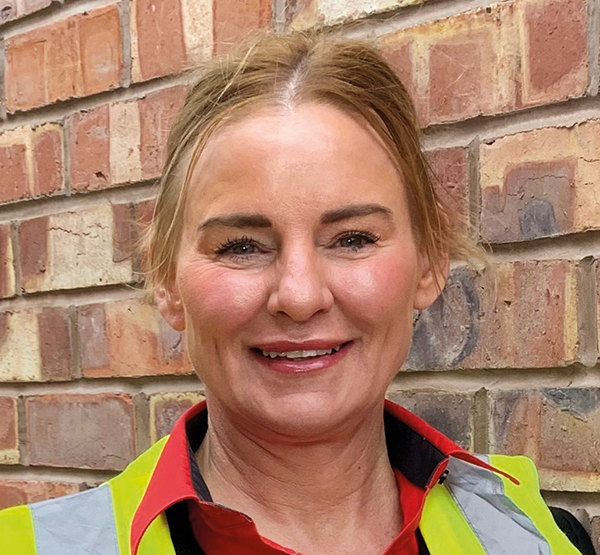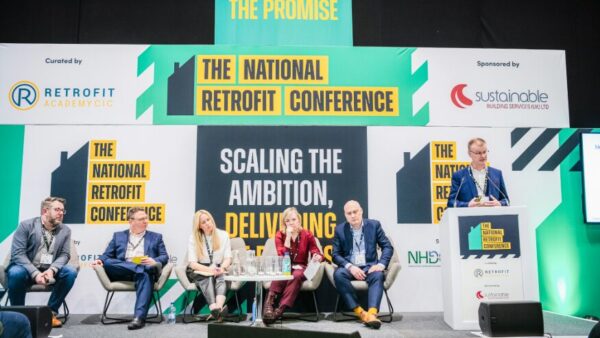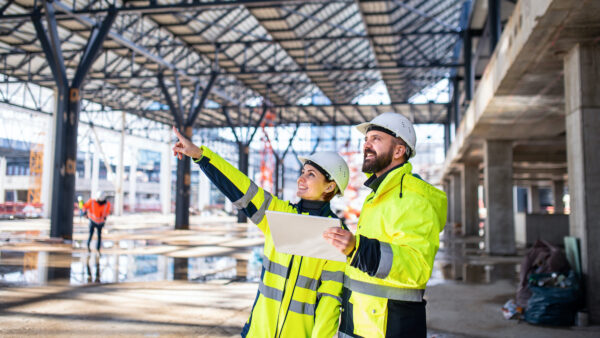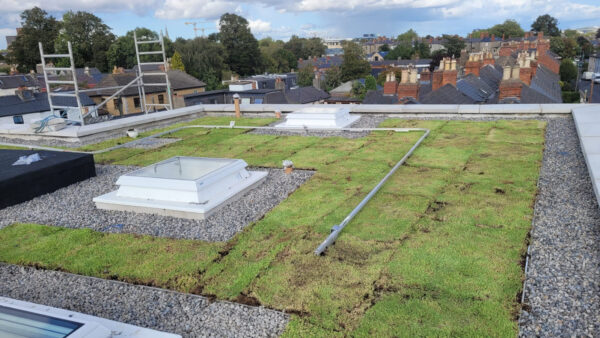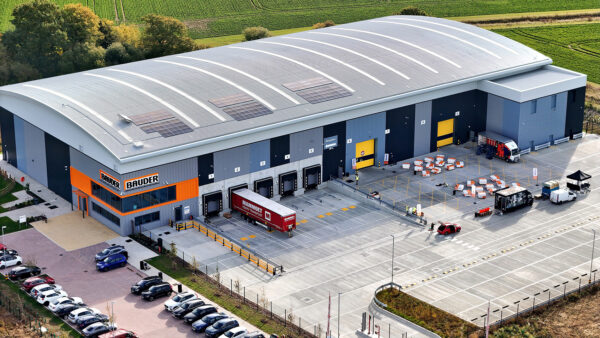
Already committed to sustainability and circularity, tool manufacturer Hilti is taking its efforts to the next level. Annette Borén, chief financial officer and head of sustainability for Hilti Northern Europe, tells CM how the company’s unique business model enables its holistic approach.
Sustainability is not something new for us. It has always been at the heart of how we operate – now we are stepping this up,” says Annette Borén, Hilti Northern Europe’s chief financial officer and head of sustainability.
Hilti has partnered with independent business sustainability rating supplier EcoVadis, which assesses 85,000 companies across the world. The tool manufacturer has already jumped from silver status in 2020 to gold in 2021, putting it among the top 5% of companies. But Borén wants Hilti to rise further to a platinum rating and the top 1%.
It’s a strategy that Hilti’s workforce and customers are on board with. Borén explains: “For the young generation that we are now hiring, it’s a given that we take action. But our customers are also expecting us to lead.”
Three pillars
Hilti’s approach to sustainability is supported by three pillars, under the headings of: Environment, People, and Society.
When it comes to environmental measures, the business has already taken a significant leap on cutting its CO2 footprint. In 2019, emissions stood at 195 kilotons of CO2 across the globe. That fell to just 84.8 kilotons in 2020 – understandable in the context of Covid-19 lockdowns. But interestingly, it rose only slightly in 2021, to 92.3 kilotons, despite lockdowns subsiding.
Hilti’s three pillars of sustainability
Environment
Become CO2 neutral by 2023
Lead the industry in circularity
People
Differentiate through user health and safety and building safety
Lead in employee health and safety
Society
Create social impact at scale
Uphold Hilti and the industry to the highest standards in business ethics
It’s not a coincidence, as Borén explains. Hilti has embraced the remote working practices that it found itself having to use in 2020. But it’s by no means the whole story – with it has come a concerted effort to move Hilti’s substantial fleet of vehicles away from fossil fuels and onto electric vehicles (EVs). “The vehicles are a big part of our footprint,” says Borén. “We have 14,000 vehicles globally and almost 4,000 are now fully electric or hybrid.” Despite the heightened demand for EVs, Hilti hopes to accelerate its move to EVs as quickly as possible.
Meanwhile, it has moved its northern European headquarters in Manchester from an ageing building in Trafford Park to the energy-efficient Circle Square building, on the former site of the BBC’s Broadcasting House on Oxford Road. Built by John Sisk & Son, the building has a BREEAM Excellent rating.
Efforts to reduce direct emissions go hand in hand with a programme of carbon offsetting that Hilti hopes will help it to achieve its aim of being carbon neutral in 2023.
Circularity
When it comes to the tools it produces, Hilti’s commitment to circularity is key. Hilti is at pains to reduce the resources it uses by first making sure that customers have the right number of tools for their needs and then offering local repair services to extend their lifetime as far as possible – the longer a tool’s life, the fewer resources used up replacing it.
Next, it focuses on reuse. Hilti is a rarity in the world of construction tools, in that it services and repairs all its own tools and takes them back once they reach the end of their life. It can do this thanks to its Fleet Management programme. Customers effectively lease the tools and at the end of the contract, the tools return to Hilti’s 65 repair centres across the world. Hilti removes any spare parts that can be reused and puts them back into the repair cycle.
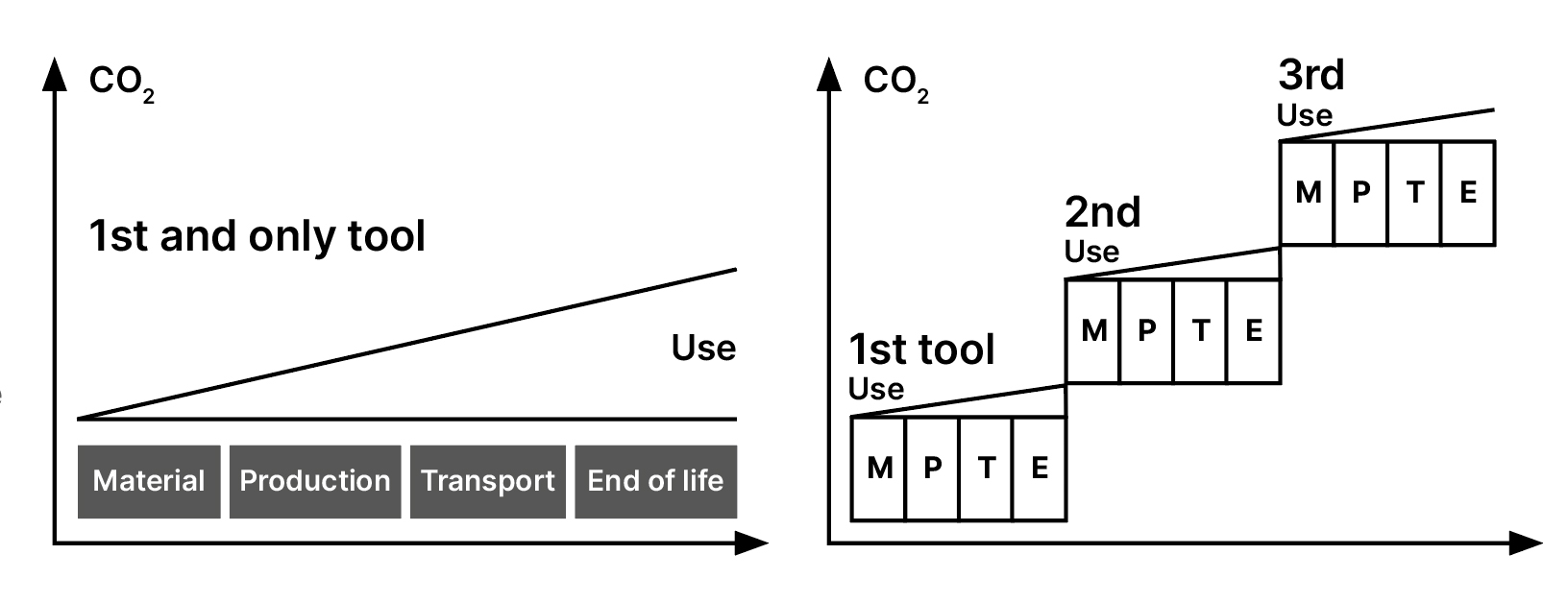
If the tools are still in fairly good shape, Hilti repurposes them so that they can go to charitable organisations. Finally, anything that it can’t reuse – whether it’s batteries, plastic, steel or copper – is recycled via third-party organisations. Almost 70% of Hilti’s tools are recyclable, and 27% of the materials in its new tools are recycled materials.
That’s crucial when you consider that the lion’s share of the embodied carbon in a tool comes from the raw materials needed to make it. Its production, use and transportation account for far less (see graph above).
The company’s Nuron system, which recently launched with a range of 70 cordless tools that operate off the same 22V battery platform, is the next step. It promises to make Hilti’s ‘reduce, reuse, recycle’ approach even more efficient. “If you operate in a smart way, you won’t need as many batteries as before. We can offer a full tool park analysis to customers who have a fleet contract with us. Most of the time our assessment tells them that they need fewer tools going forward,” says Borén.
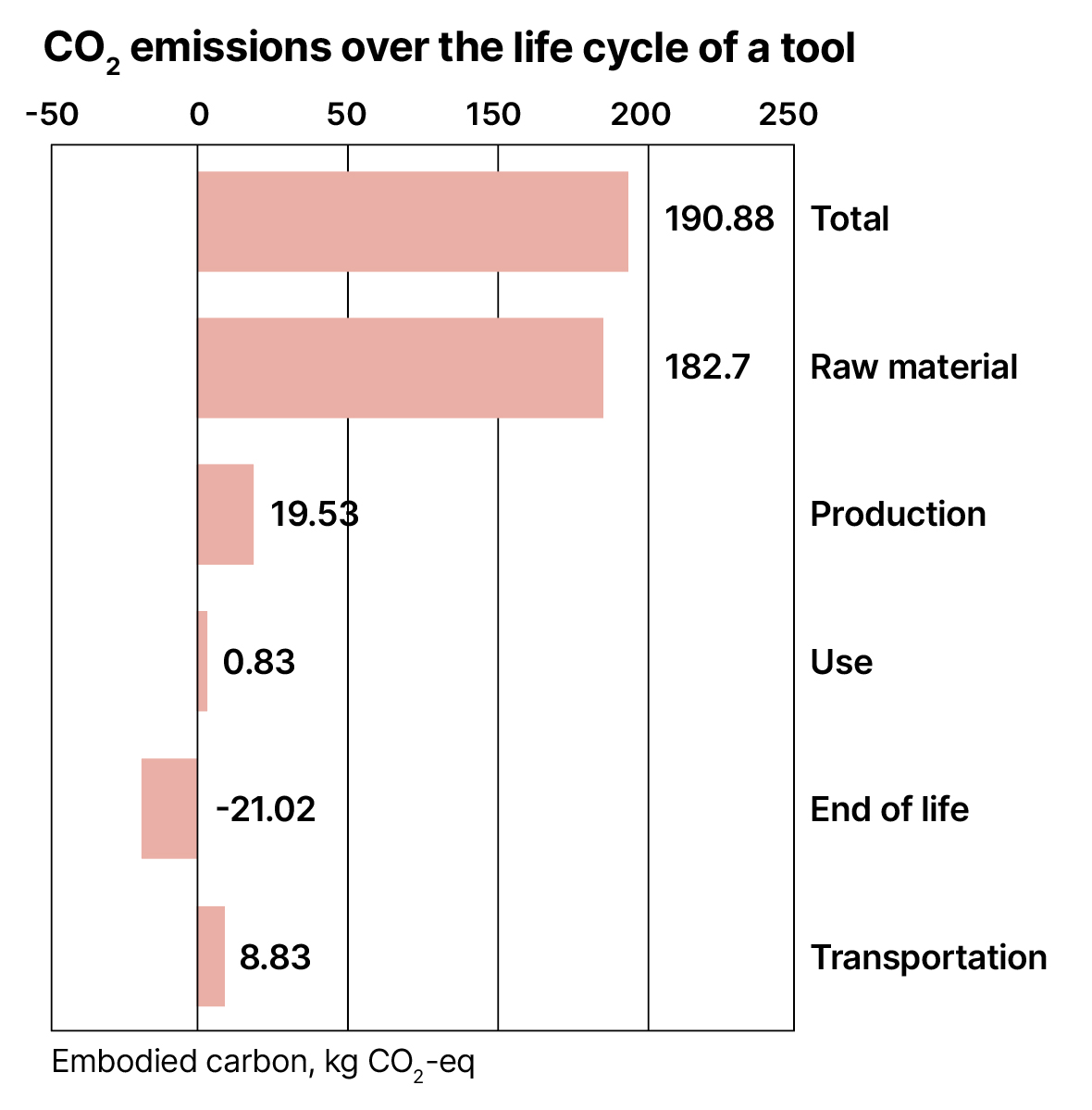
Safety
She explains that Hilti is an advocate of BIM, not just to improve building safety but to make buildings greener too. “If architects use BIM from the start, we know there is much less waste during construction. And we can also make sure that the products staying in the building have as little carbon footprint as possible.”
When it comes to user safety, many Hilti tools boast features such as Active Torque Control (ATC), which shuts tools off if it detects them stuck in the base material and starting to rotate, as well as Active Vibration Reduction (AVR). AVR helps to damp vibration, reducing the risk of hand-arm vibration syndrome (HAVS).
While issues such as HAVS are well publicised in construction, Hilti is also focusing on how it can protect workers from musculo-skeletal disorders. That has given rise to the development of its EXO-01 exoskeleton, launched a year ago. The exoskeleton reduces load on workers’ shoulders and back.
“This is a seismic update in the marketplace,” Borén concludes. “Major contracts are assessing their CO2 impact right at the start of a project now. Everything that goes into site, whether it’s bricks, mortar, concrete or tools, is assessed. Hilti’s clear overview and transparency will be massively important going forward.”
More information: https://hilti.to/58ddyr.


